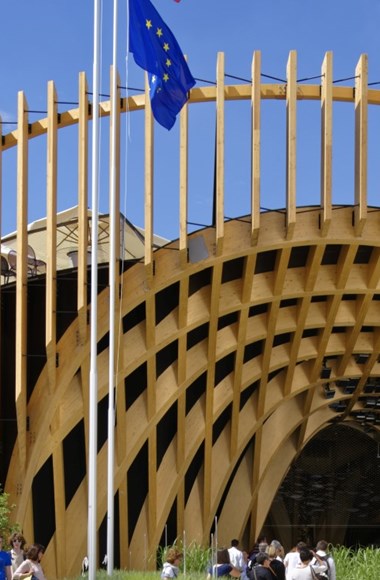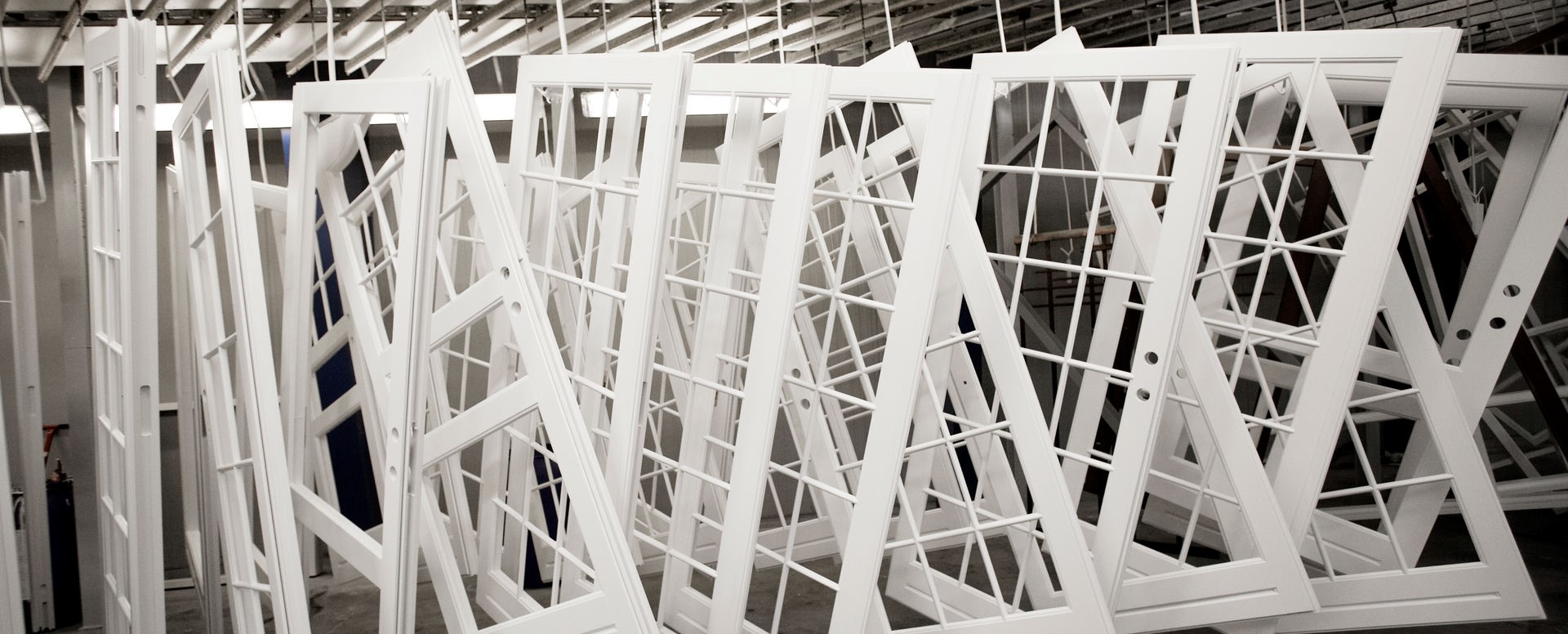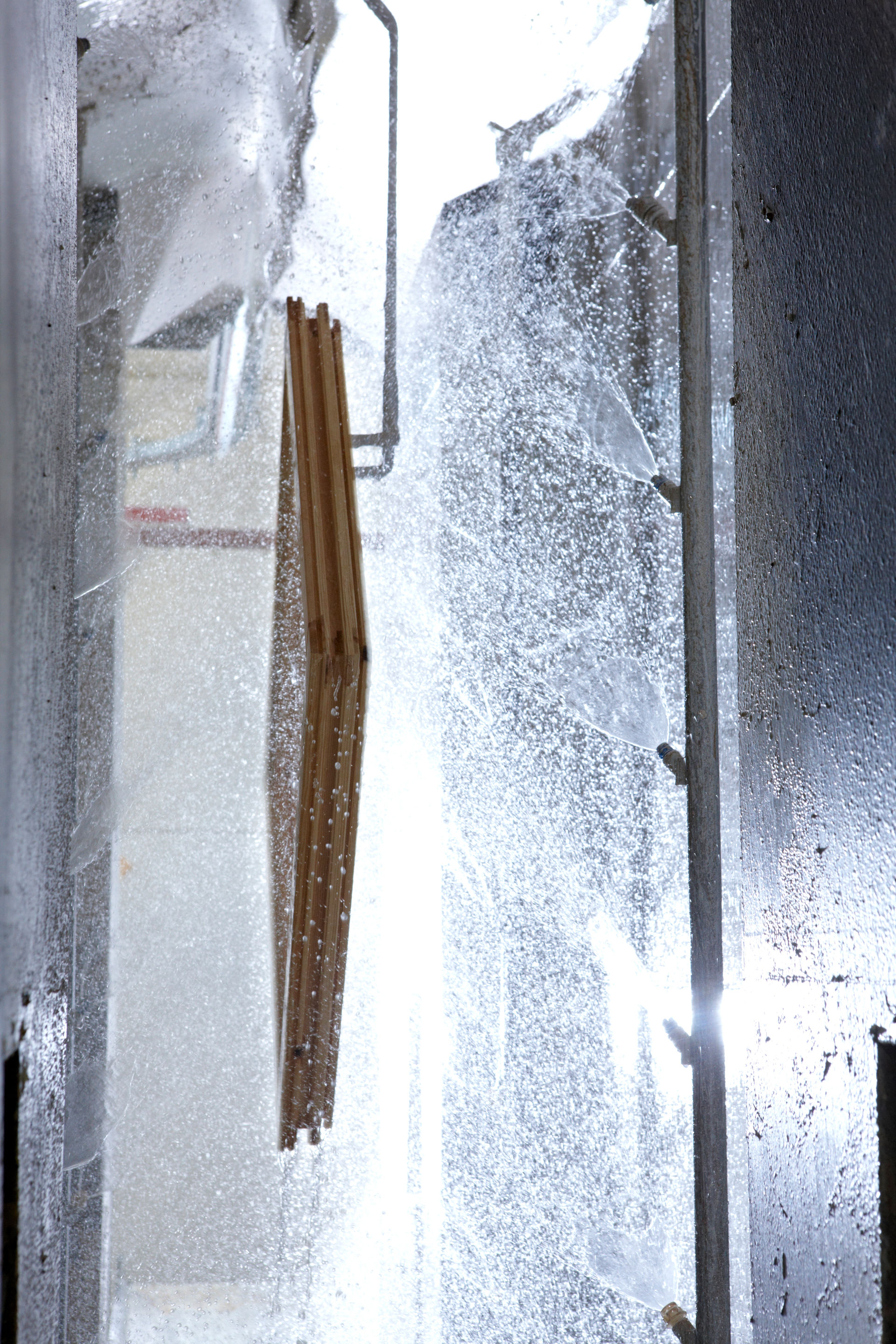
Successful switch to TEKNOSAFE
Since 2017, French manufacturer Simonin S.A.S. has been using an innovative fire-retardant TEKNOSAFE coating on its exterior formwork.

Which is the best coating system to use? The local Teknos experts will help you make the right decision. Our coating recommendations for typical requirements provide an initial pointer. In this article: Opaque coatings for wooden windows.
Classic white, trend colors such as anthracite, color accentuation of building facades - opaque coated windows and external doors play an important role on the market. Many different aspects must be taken into consideration when selecting a coating. Which types of timber have to be impregnated? What is the best way to prevent color changes? Can high temperatures cause problems with dark colors? Teknos has the answers and technical know-how to help window and door manufacturers choose the right system coatings.
As with translucent coatings, the following applies: The resistance class determines whether an impregnation is used. woods starting at resistance class 3 (this includes all softwoods) must always be impregnated. Impregnation is a possibility with resistance classes 1-2, and in some cases also advisable. As an example, this applies to white oak, which despite being a resistance class 2 wood is susceptible to blue stain and should therefore be impregnated.
Meranti is a special case. There are considerable variations in bulk density within the types used for window construction. Therefore, the resistance class of meranti ranges between 2 and 4 depending on the type and bulk density; meranti with a resistance class poorer than 2 must be impregnated. Weight class provides an indicator: meranti from 550 kg/m³ upward is generally resistant enough to do without impregnation. Window manufacturers should therefore check the documentation for the weight class when purchasing.
Suitable Teknos products for impregnation is TEKNOL AQUA 1410-01. Pigment-free water-based impregnation offers reliable, effective protection against blue stain and wood-destroying fungi and complies with EN 599. It is suitable for flowcoating and dipping, dries quickly and is non-staining.
Color changes predominantly occur as a result of the ingredients used or distinctive differences in the substrate color, particularly in the case of light colors. The issue with ingredients mainly relates to hardwoods. Tannins and water soluble color contents can bleed from almost all hardwoods and discolor the topcoat. The effect is particularly pronounced in oak, for example, where the tannic acid in the wood can produce a yellowish discoloration on lighter colors. Discoloration of this kind can also occur on many types of meranti, which is why an anti-stain should be used on hardwoods. The product prevents water soluble ingredients from penetrating the topcoat. ANTISTAIN AQUA 2901 is included in the Teknos range. The special primer is suitable for dipping, flowcoat and spray applications, and can also be used as an intermediate coating.
Colorants in wood represent another challenge and can cause the wood to puncture through light topcoats. This happens, for example, when knots are processed (as is typical in Nordic countries) or if there are distinctive differences between heartwood and sapwood. Color contents around the heartwood can produce unsightly visual effects, primarily among colored heartwoods such as larch and pine. The wood should also be sealed here. ANTISTAIN AQUA 5200 spray knot sealer is the perfect solution. It binds colorants from knots and heartwood and reduces discoloration of the final coating.
The anti-stain can also be used as an intermediate coating for filling pores. A coating with two layers of ANTISTAIN AQUA 2901 for a layer thickness of 200 µm is therefore recommended for hardwoods. On normal softwoods that do not require pore filling, the application of an anti-stain primer with 175 µm layer thickness in a single spray coating is sufficient.
The opaque variants of AQUATOP 2600 are ideal for producing a durable topcoat. The water-borne topcoat is easy to process, extremely weather-resistant and provides reliable protection again UV radiation. In principle, all RAL and NCS colors and gloss grades from 15 to 60 are possible. The Teknos colour labs help with order-related color tones according to building specifications, and with developing your own color collections.
It should be noted that dark colored surfaces absorb UV rays much more intensely and can heat up to more than 70 degrees. Resinous woods such as spruce can produce a resin flow that damages the paint layer. For this reason, Teknos offers a version of AQUATOP 2600 with special pigments as an option for dark colors. These so-called 'cold' pigments reflect more UV rays and prevent the surface from heating up as much.
Anyone who does not wish to use this option can either avoid using extremely dark colors on resinous woods or switch to alternatives with a lower resin content (fir instead of spruce). For corresponding recommendations, see documentation from individual associations and institutes such as the Rosenheimer window table in Germany.
Opaque coating of softwoods (3 layer system)

Opaque coating of hardwoods and some softwoods such as pine and larch (4 layer system)
Light tones are susceptible to color changes. Hardwoods should be primed using ANTISTAIN AQUA 2901 to seal in the wood contents. In the case of softwoods with knots or distinctive heartwood, ANTISTAIN AQUA 5200 prevents discoloration of the topcoat.